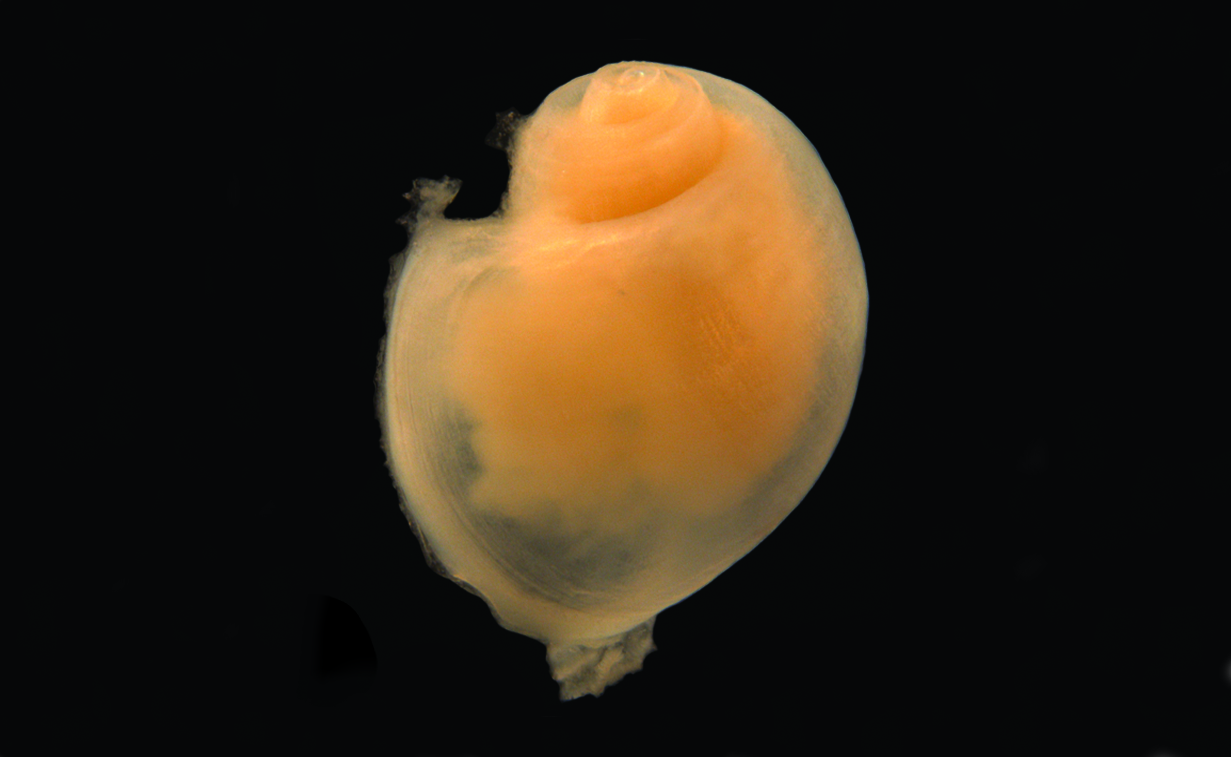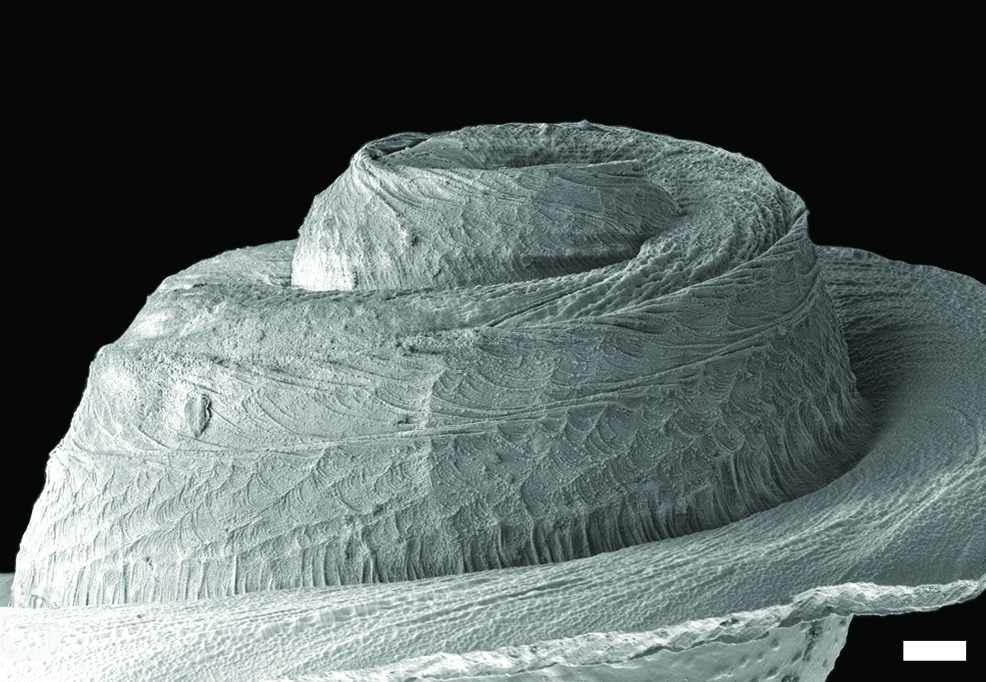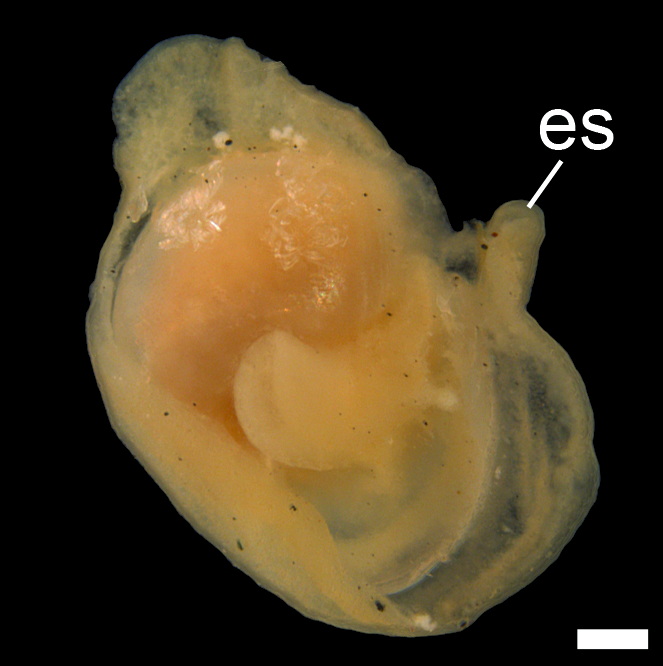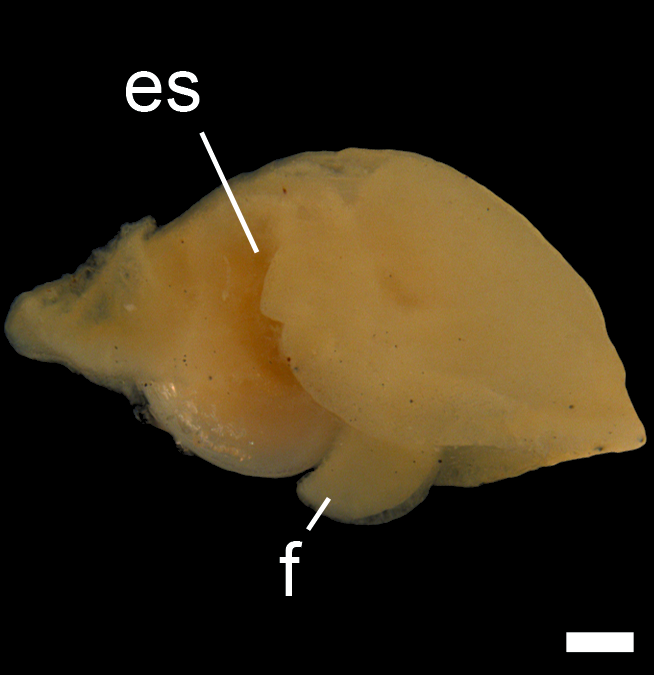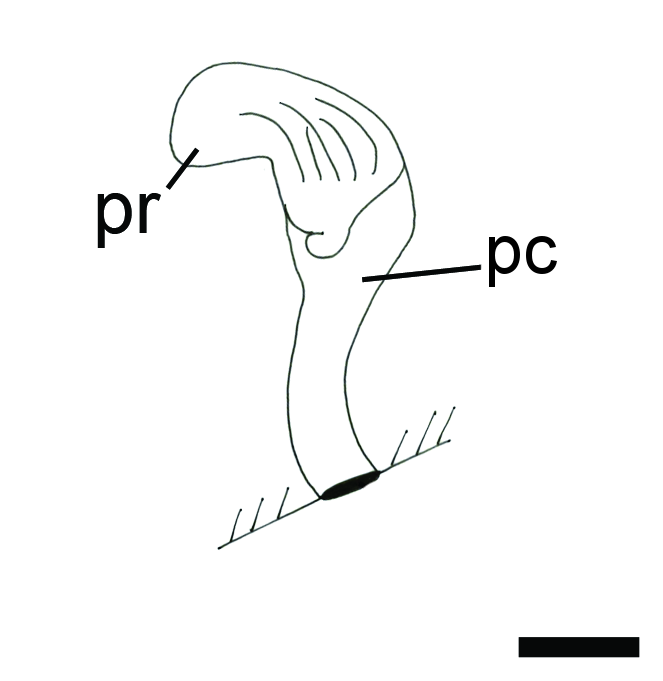Colpodaspis pusilla
Shell description
The thin shell is internal and whitish-transparent in colour, usually with a globe-like shape. The spire of the shell is raised while the top of the shell (apex) is slightly sunken. At the bottom part an umbilicus is present. The shell pattern consists of faint growth lines and shallow spiral lines, but the sculpture is more irregular on the inner whorls. The opening is large. The length of the shell varies between 2.4–2.6 mm.
Animal description
The body is transparent with white dots, and the head shield has long thin tentacles in the front. The foot is lobed in the front. The tissue covering the shell (mantle) forms an exit canal for water (exhalant siphon). The snail can retract completely within the shell.
Anatomy
The radula is consists of 34 rows of teeth, with two outer lateral teeth and one inner lateral tooth on each side. The central (rachidian) tooth is absent. The outer lateral teeth are curved with a broad base and smooth surface; the inner lateral teeth are curved, with a broad base and a smooth inner edge. The male reproductive system consists of an elongate penis chamber and a flat folded prostate.
Ecology
Occurs down to depths of 230 m on stones and slag, on Laminaria kelp stipes, red algae, polyzoan colonies and the tube-worm Filograna implexa.
Geographical distribution
Occurs in Norway from Trondheim southwards over the British Isles to the Mediterranean Sea.
References
Ohnheiser LT og Malaquias MAE (2014). The family Diaphanidae (Gastropoda: Heterobranchia: cephalaspidea) in Europe, with A redescription of the enigmatic species colobocephalus costellatus M. Sars, 1870. Zootaxa 6(3774): 501-522. http://zoobank.org/References/1C4C791C-09D7-4711-9D05-1ABE3DB24916 DOI: 10.11646/zootaxa.3774.6.1.
